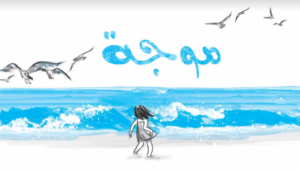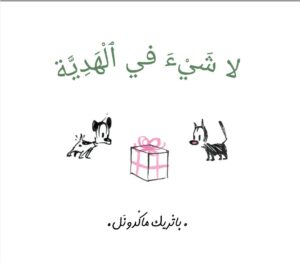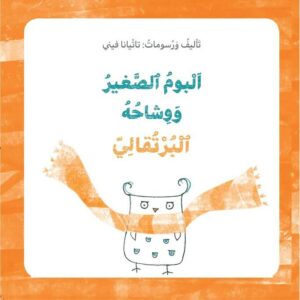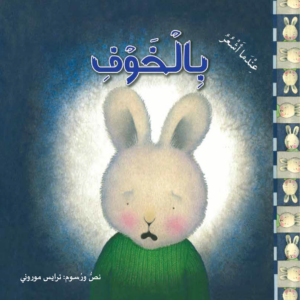Let’s Talk
- About Plot: We can observe the details of the illustrations, and encourage our child to describe them, follow the events, and make connections. We notice changes in the sea scene, the girl, and the birds, describing the girl’s feelings each time.
- About Personal experiences: Have we experienced similar feelings? How and when? We can recall our journeys, adventures, moments, and various experiences.
- About Seas and nature: What does the sea remind us of? Which seas have we visited? What other natural places do we know? We can compare them: how are they similar or different?
Let’s Enrich our Language
- Description and comparison: We can describe the girl’s features and the feelings she expresses. We can compare them in each scene.
- Birds: We can pay attention to the birds in the drawings, think about their relationship with the girl, and learn about their characteristics and advantages.
- Names: We can suggest a name for the girl, think about our own names, who gave them to us? We try to remember the stories and meanings behind our names.
- Actions: We can observe the girl’s movements and name them. We can also perform similar actions.
Let’s Explore
- Seas: we can visit a nearby sea, look at the sunset or sunrise, observe the waves, and enjoy the beach sand. We can look for scientific information: How are waves formed? What marine life lives in the sea and what distinguishes them?
- Nature: We can choose a natural place for a shared We can visit it, appreciate its details, listen to the sounds, get to know the creatures, describe and play together. We may search the internet and encyclopaedias for information about the place before or after the visit.
Let’s Create
- Paintings of Nature: we can collect materials from nature during our outing and create paintings to decorate our home. (Paintings from seashells, mountain stones, or garden leaves).
- Our book: we can document our moments with pictures and compile them into a book for the story of our enjoyable journey. What do we want to add to it?
Let’s Talk
- About the title: We can ask the children what is meant by “nothing” in the gift box?
- About the meaning and value of the gift: We can talk about the meaning of the gift, asking our children: Why do you think the cat wanted to give the dog a gift? Is it important for us to give each other gifts? How do we feel when we receive a gift?
- About ways of expressing love: The gift is often a way of expressing love. We can ask our children: How can we express our feelings, such as love, appreciation, and concern for friends and family in ways other than giving material gifts?
- About Drawings: The drawings in this book have a “comic” style. We can explore with our children where this style is used to convey information or tell a story (such as advertisements, children’s magazines, etc.).
Let's Create
We can think about a special person in the child’s life whose birthday is coming up, and we can prepare a special gift for them, such as a photo album of beautiful moments spent together, a photo frame, a card expressing our love, creatively wrapped.
Let’s Enrich our Language
“Nothing” is a commonly used term in our colloquial language, as in the story, and is often used metaphorically. We can follow different situations in the story, replacing the term “nothing” with a detailed sentence expressing the situation, and encourage our children to express themselves.
نتحاور
نتحاوَر حول:
الهدايا: لماذا نتبادل الهدايا؟ وما المعاني والقيَم التي تعبّر عنها؟ أيّة هدايا نحبّ أن نتلقّى؟ أن نقدّم؟ لمَن؟ ما الفرق بين الهدايا المادّيّة والمعنويّة؟ قد تكون الهديّة كلمةً طيّبةً/ تشجيعيّة/ نظرةً دافئةً/ مساعدةً نقدّمها، ماذا أيضًا؟
ذكرى الميلاد: كيف نشعر في ذكرى ميلادنا؟ ما المفاجآت التي تجعل من هذا اليوم مميَّزًا. نستمع إلى خبرات الأطفال.
الصّداقة: مَن هم أصدقاؤنا؟ ماذا نحبّ أن نفعل معهم؟ نشارك بخبراتنا الذاتيّة. نستذكر هدايا معنويّة تبادلنا مع أصدقائنا (هل لعبنا معًا؟/ ساعدَ أحدنا الآخر/ كيف نشعر بمشاركة الأصدقاء ووجودهم؟).
شخصيّات القصّة: من هما وديع ونبيل؟ نتحاور حول احتياجات الكلب والقطّ والإنسان، بماذا تختلف؟
Let’s Talk
– About desires: The little owl understands what he likes, such as sledding, eating ice cream, and adding numbers. We can talk to our child about the things they like and want to do.
– About expressing feelings: The little owl tried various ways to get rid of the scarf. We can ask our child why he did that and suggest alternative ways to express dissatisfaction or displeasure to parents.
– About participating in decision-making and choices: The owl mother decided to involve her child in choosing the scarf he wants. We can talk to our children about situations where they participate in decision-making, such as choosing clothes, toys, household chores, and situations where they don’t participate in making choices. Ask them: How do you feel? How would you like us to act?
Let’s Communicate
- – We can spend some quality time with our child on a nature walk or a trip to a nature reserve, like Al Hula Reserve, where we can learn about different bird species, especially during their migration season.- The owl mother knitted the scarf for her child. We can enjoy preparing a product with our child, like making an owl doll from old clothes.
Let’s Enrich our Language
– The little owl accurately expressed his dislike for the scarf using appropriate adjectives. We can play a guessing game with our children, saying, for example, “I see something tall, green in color…” and let the child guess. We ensure the use of precise qualities for the item or thing that our child will understand.
Let’s Act Out and Create
Let’s talk to our child about situations where they feel frustration or anger. The scenario helps us think together about ways to alleviate their feelings and use appropriate social expressions.
We can chat..
We can chat with our child about things that make them afraid. We can encourage them to talk about everything: What exactly frightens them, and which feelings do they ?experience physically at that moment
People differ in...
People differ in their physical reactions in situations of fear, some of them become irritable, sweat and feel hot, and others feel paralyzed, or they may feel cold. It may be helpful to share what scares us with our child, and how we physically feel in moments of fear.
What can help...
What can help us relieve our fear in each situation? Together, we can think of practical ways that suit our child’s abilities, such as asking for help, breathing deeply, or turning to someone they trust.
Often, when we...
Often, when we materialize the source of our fear, we feel that we are in control of it, and this reduces the severity of its impact on us. We can encourage our child to draw what they are afraid of, or to shape it with playdough.
 Wave
Wave  The Gift of Nothing
The Gift of Nothing  The Small Owl and his Orange Scarf
The Small Owl and his Orange Scarf  When I’m feeling scared
When I’m feeling scared 
